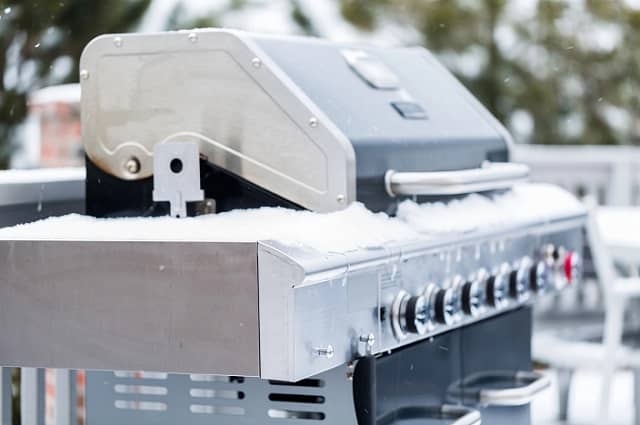That craving for a perfectly cooked char-marked steak hot off your trusty grill can strike at any time of the year, which poses the question: Is it ever too cold to grill? The short answer is—never. You can even grill during a snowstorm, although it’s not recommended. But you can make it easier to satisfy those grilled meat cravings as the temperature slides down to snotsicle lows with only a few minor adjustments. Here are some winter BBQ grilling tips.
The Right Spot
Use common sense. Find the area least affected by the elements, especially the bite of the wind, yet close enough to the house for easy access. But not be too close. Station it at least 10 feet away from any combustible structure. If you can’t stay out of the wind completely, identify which direction the wind blows and position your grill, so the gusts hit your back.
Have Patience
Much like a car’s engine, your grill will take longer to warm up in cold temperatures. A gas grill can take up to twice as long to preheat in frigid temps. You’ll also need a bit more fuel in the winter to attain and maintain heat, so keep extra charcoal, propane, or pellets on hand.
Don’t Dangle
Yes, when it’s 30 degrees you need to bundle up, but keep in mind you’re working over open flames. Avoid wearing scarves or anything that can dangle over the grill, including straps or bobbles on coats and hats. Frostbitten fingers just lead to the blasphemy of dropped meat, so find gloves that still allow you to deftly handle your grilling tools.
Keep It Closed
Each time you lift the lid, heat escapes, which ultimately prolongs your grill time. Keep it closed. But invest in an app-connected wireless grill thermometer, so you can monitor the temperature on your phone so you can make adjustments before it’s too late without precious heat seeping out.
Get the Gadget
You may know your grill temp, but what about the meat temp? Remember, cold-weather grilling takes longer, so summer cook times may no longer apply. The solution is a Wi-Fi-enabled meat thermometer with the probe stuck in the thickest part of the cut. Now you can know with certainty right on your phone (or the monitor) the exact temp of what’s on your grates.
Hot Pan
Either a ceramic or cast iron pan will do fine, but it’s important to have a warm pan nearby and ready to transfer your meat on to when its finished grilling, preferably with a lid or foil covering. This keeps your creation toasty warm as you rush across the frozen deck or yard to the shelter of the house where eager tastebuds await, grateful for your foray into the tundra.


